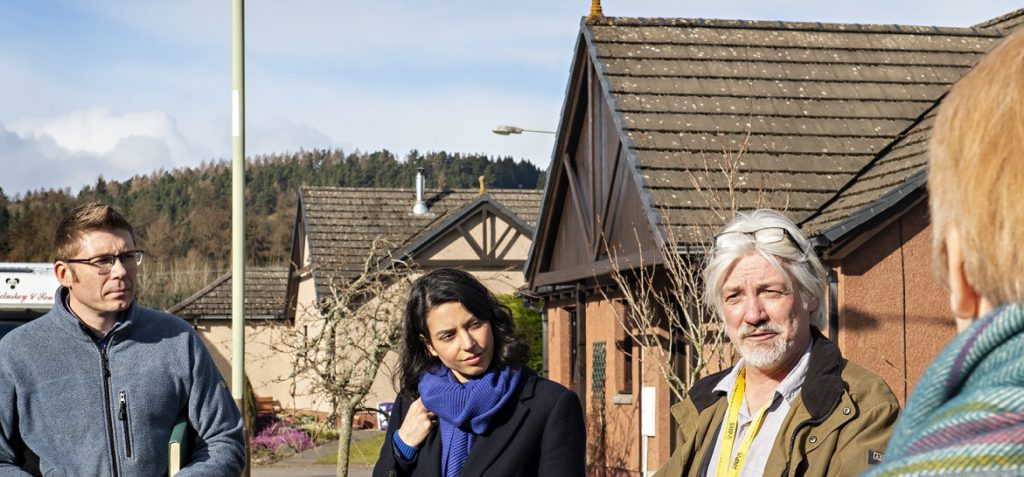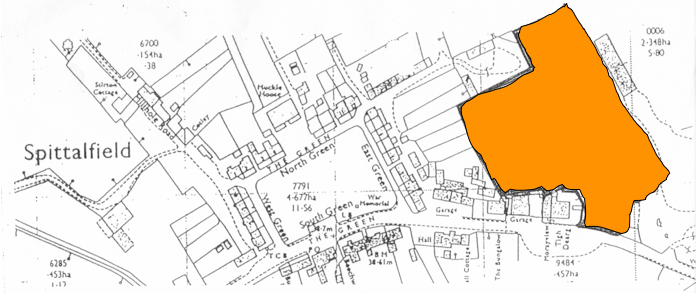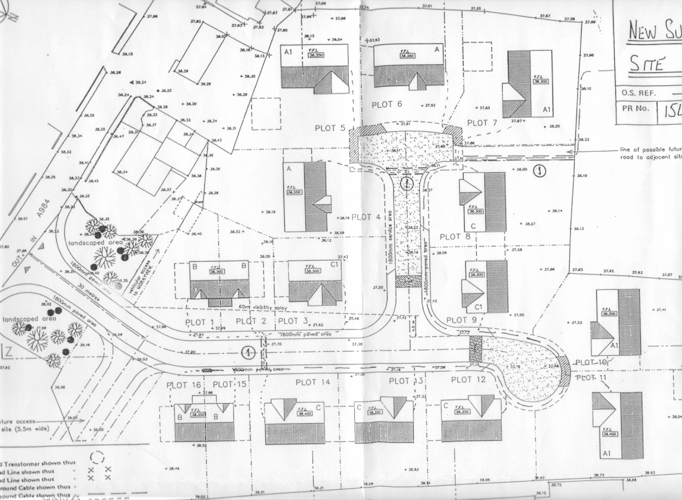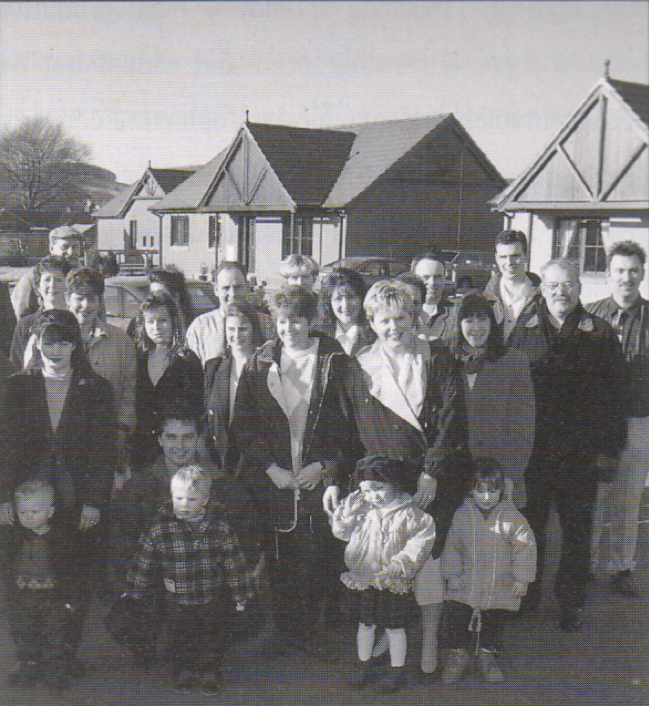Spittalfield, Perthshire

Community Learning Exchange
In February 2020 we hosted a Community Learning Exchange to Spittalfield, supported by Scottish Community Alliance, so that communities from across Scotland could learn more about the more about their collaborative self build project.
Representatives from Colonsay, The Borders, The Highlands, Orkney, Blairgowrie, Canna, Rum, Lismore and Aberdeenshire visited the village to hear more from Cllr Grant Laing who, in 1993 along with 11 other families, built their own homes together using Rural Home Ownership Grants. They then joined together in Birnam for an afternoon of discussions to hear more about the Hope Co-housing project in Orkney and the Bath Street Collective build initiative.
Read our report on the Community Learning Exchange to Spittalfield to find out more.
Summary
The Spittalfield village project was a unique rural housing initiative. The development consists of 12 detached bungalows built by local families with the help of Rural Home Ownership Grants (RHOGs) from Scottish Homes.
The entire project was co-ordinated by Perth Housing Associaton (part of Caledonia HA). Each of the owner-occupiers received a Rural Home Ownership Grant of up to 40% of building costs from Scottish Homes. The rented housing was built with Housing Association Grant from Scottish Homes. The project demonstrates how a group of people can pool their resources to deliver good quality new housing made more affordable because by working together greater economies of scale were generated.
Background
The village of Spittalfield is situated in Perthshire between Dunkeld and Blairgowrie, and approximately 16 miles from Perth. The village has a shop & post office, a garage and a pub. The local primary school is located in Glendelvine a mile outside the village and is shared with the neighbouring village of Caputh. The school roll is 48.
The Initiative
The Spittalfield initiative is a story about local people with a common problem working together to try to find a decent home without leaving their rural roots. It is a story about people determined to have a say and stake in the future of their village.
In early 1983, the village mechanic approached Scottish Homes to enquire about a grant to help build his own home. Heartened by the news that a Rural Home Ownership Grant may be available, he mentioned this to a friend. Before long, 12 local households, all of whom were living in poor and expensive housing had requested information about RHOGs.
The households decided that by pooling together they could reduce the cost of building the houses. Individually they would need their own builder and architect . By working together they could generate greater economies of scale by letting the contract to one architect and one builder as a 12 house contract. At the same time each family would still be able to have a significant input in the design of their homes. The cost of infrastructure like road access, sewerage and drainage was also shared between 12.
The other reason for developing together was that they would be able to buy a large site on the edge of the village on which to develop the houses- individual house plots were much more difficult to find.
The interest from so many villagers in RHOGs was in part due to a local estate imposing immediate rent rises of 300-400% on its tenants. Of the 12 applicants , 6 were renting from Glendelvine Estate and one from Murthly and Strathbraan Estate. One was on a very insecure short assured tenancy, Two were living with parents and the other was living c/o. 11 of the 12 applicants were either young couples or couples with young families

Perth Housing Association
The Group realised that the development of 12 houses would require a great deal of project management and at the suggestion of Scottish Homes made contact with Perth Housing Association (now Caledonia HA). PHA agreed to act as agents to co-ordinate the project and to purchase the large site on the eastern edge of the village.
The site was previously a bus depot and coachworks and the derelict buildings blighted the entrance to what was otherwise a most attractive village. The housing association bought the land on the understanding that it would later be transferred with the 12 RHOG recipients on the completion of their homes.

In March 1993 the group interviewed architects who would be willing to work with them on the layout and house design. In April 1993 the Dundee practice of Kerr Duncan McAllister with experience of community architecture, were appointed. For the entire design process, the group were closely involved with every aspect and many winter evenings were spent with the architect pouring over plans and elevations in the village hall.
Perth Housing Association was responsible for raising development finance, tendering the work and letting the building contract. In turn each member of the group entered into a sales contract to buy their home on completion.
Still there were a number of uncertainties faced by Perth Housing Association as the developer. At any time they realised that either ill-health, redundancy or family break-ups could lead to any of the Group dropping out of the project and the association would be left with a house with no prospective buyer.
Perth Housing Association were also responsible for coordinating the submission of individual RHOG applications and in turn the grant was mandated from each of the Group to Perth Housing Association. To allow the development to proceed Scottish Homes agreed to pay the RHOGs in advance – they are usually paid at the end of housebuilding.
In addition to the 12 houses for sale, 4 semi-detached houses for rent were also included in the development plan. These houses were developed on behalf of East Perthshire Housing Association by Perth Housing Association with Housing Association grant from Scottish Homes. The additional scrutiny of the development plan by East Perthshire Housing Association Committee proved to be invaluable and the provision of rented housing also widened housing choice in the village.

The main contractors, Muir Construction commenced work in January 1995 and a relatively trouble free contract was completed ahead of schedule in October 1995. It is a tribute to the group that the original 12 who first came together were the same 12 who moved into their brand new houses.
Grant Laing, one of the 12 commented:
“Young families are the lifeblood of any community but especially rural villages. Once you lose the people the village school goes, then the store and before you know it, the village has little future. At Spittalfield, by banding together and working together, we have not only secured the long term future of our village but we now have super homes and a real feeling of community.”
